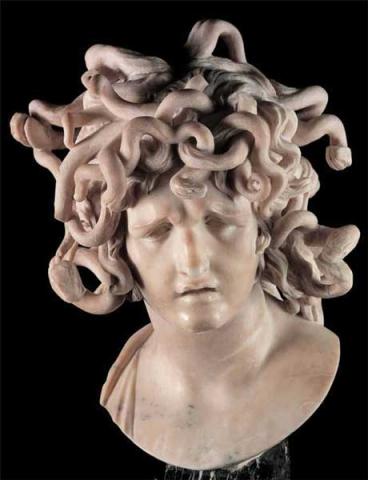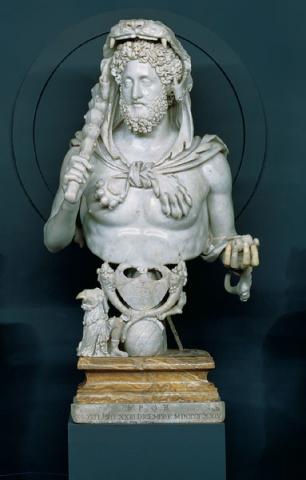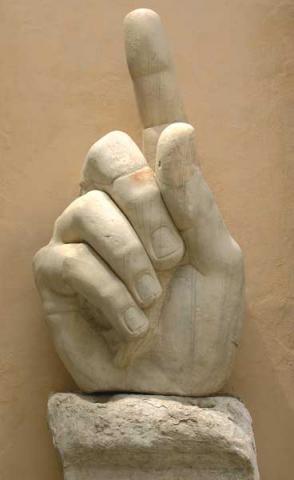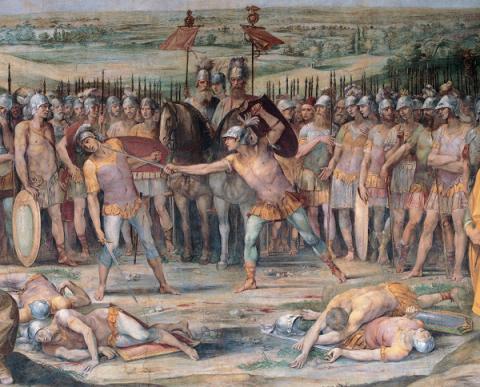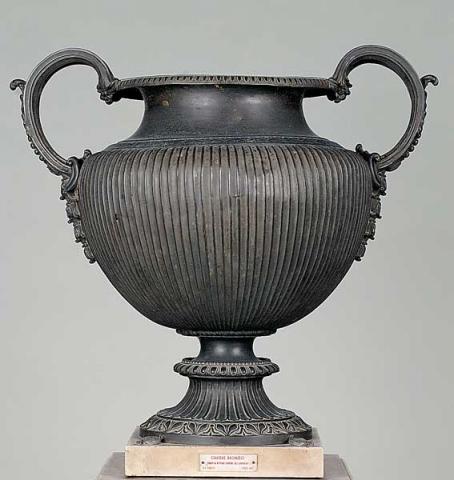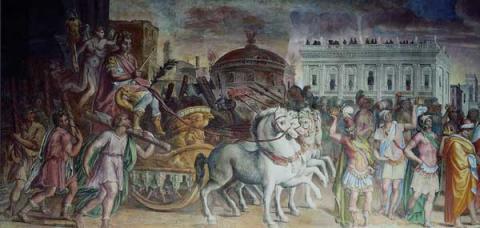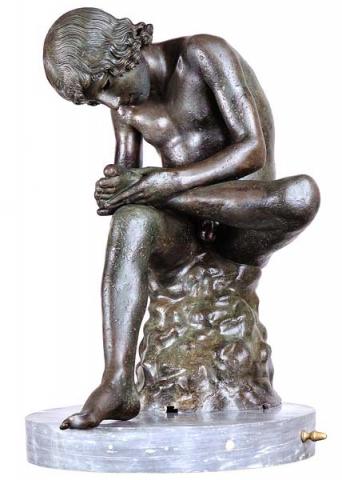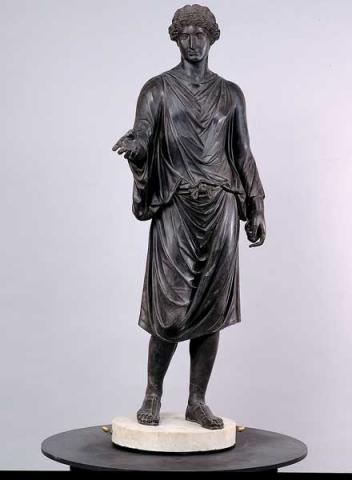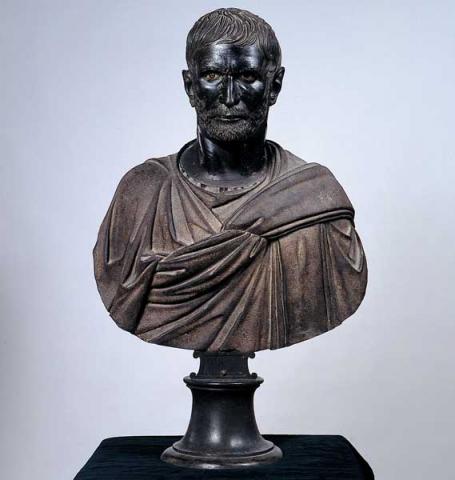Hall of the Triumphs
The frescoed frieze which runs along the upper part of the walls was commissioned from Michele Alberti and Jacopo Rocchetti in 1569.
It portrays the Triumph of Lucius Aemilius Paullus over the King of Macedonia Perseus with the Capitoline and the Palazzo dei Conservatori in the background.
The coffered wooden ceiling is the only one left among those carried out in the Palazzo by Flaminio Bolonger.
This room also contains some large bronze sculptures: the Capitoline Brutus, the Spinario and the Camillus.
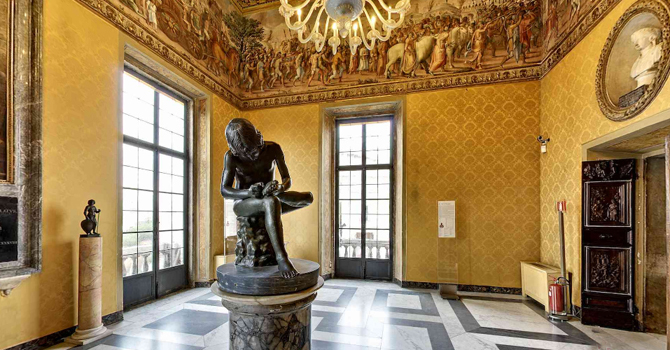
The hall takes its name from a fresco that runs below the ceiling, which depicts the triumph of the Roman consul Lucius Aemilius Paullus over Perseus, king of Macedon (167 BC). The fresco, which was painted in 1569 by Michele Alberti and Jacopo Rocchetti, faithfully describes the ceremony as told by of the Greek historian Plutarch, goods and works stolen from the enemy as spoils of war were paraded for four days. The places and the buildings of Renaissance Rome are the backdrop of the sumptuous procession of the winner up to the Capitol, recognizable for its depiction of the new facade of the Palazzo dei Conservatori, which in those years was being built.
The magnificent triumphal processions are also evoked by the beautiful bronze vase kept in the room. The work is likely to have come to Rome as a booty of the war of conquest in the East in the I century BC. An inscription engraved on the board shows the name of Mithridates VI (Eupator Dionysius), king of Pontus between 120 and 63 BC.
The hall displays, among other works, some precious antique bronzes: the Boy with Thorn, also known as Cavaspina, which reproduces a young man removing a thorn from his foot, an eclectic work of the first century BC., and Camillus, also known as the Gypsy, representing a young cult officiant, both works were donated by Sixtus IV in 1471. The Capitoline Brutus is outstanding, one of the oldest Roman portraits, dating from the fourth or third century BC, it was donated in 1564 to the Capitol.
The wooden ceiling was carved in 1568 by Bolonger; the recent restoration has brought to light the elegant tone of colour, besides the abundance and variety of carvings.


























